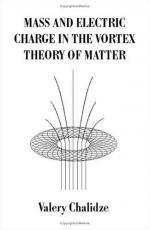|
This section contains 629 words (approx. 3 pages at 300 words per page) |

|
The ancient Greeks first conceived of the notion of an atom, which was their word for indivisible. Modern theory divides the atom into the proton, electron, and neutron. These particles all differ in weight and charge. The proton has a positive charge, the electron a negative charge, and the neutron a zero or negligible charge. Because the atom is ordinarily electrically neutral, the net positive charge due to the protons in the atom's nucleus must cancel out the negative charge of the atom's electrons, which is to say that the number of protons and electrons must be the same. Electric charge always comes as multiples of the elementary charge of the electron, i.e., 1.6 x 10-19 coulombs.
Electrons are about one six-million-millionth of an inch in diameter, and have a mass of about 0.9 billionth of a billionth of a billionth of a gram. (Actually, relativistic theory...
|
This section contains 629 words (approx. 3 pages at 300 words per page) |

|


